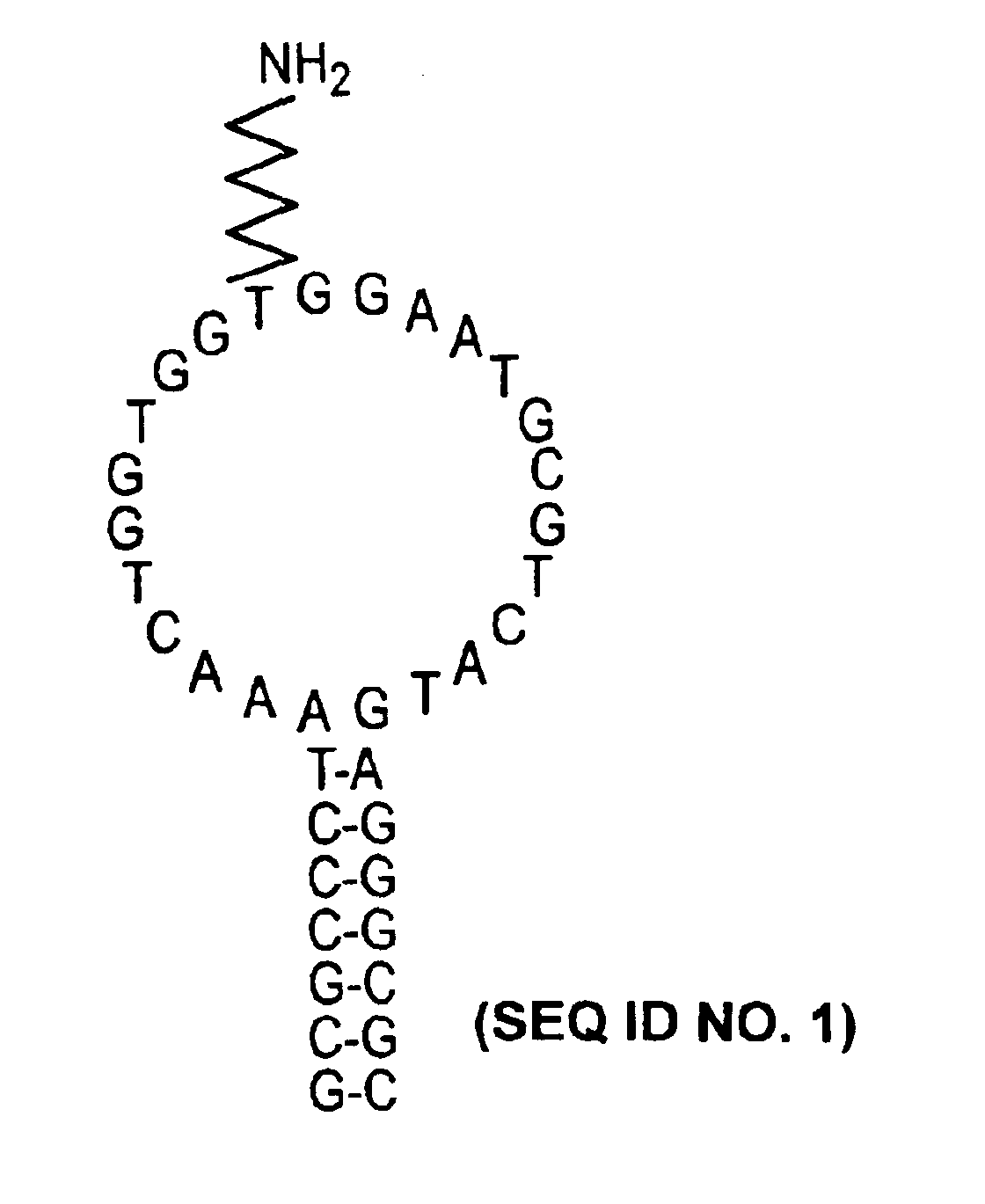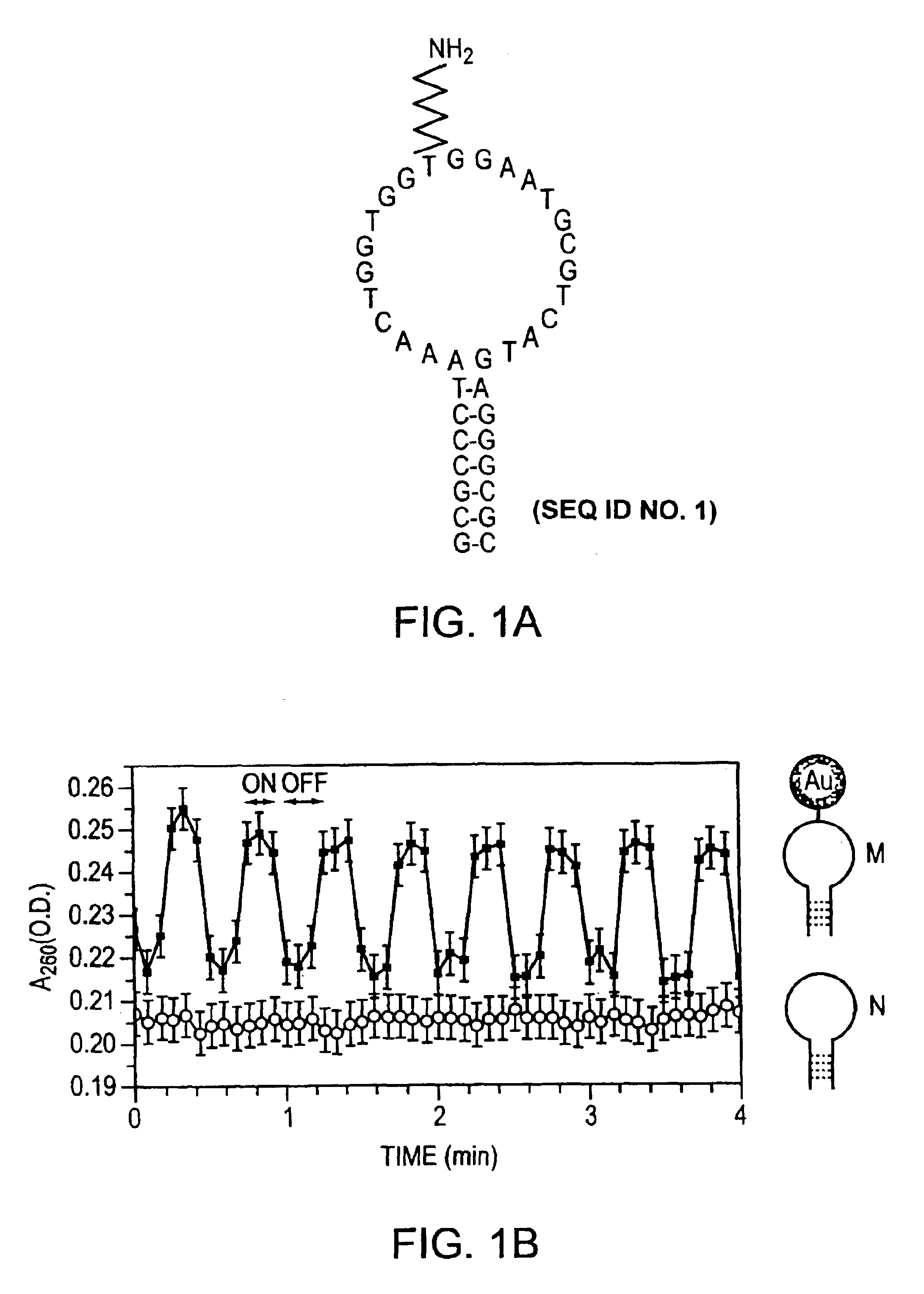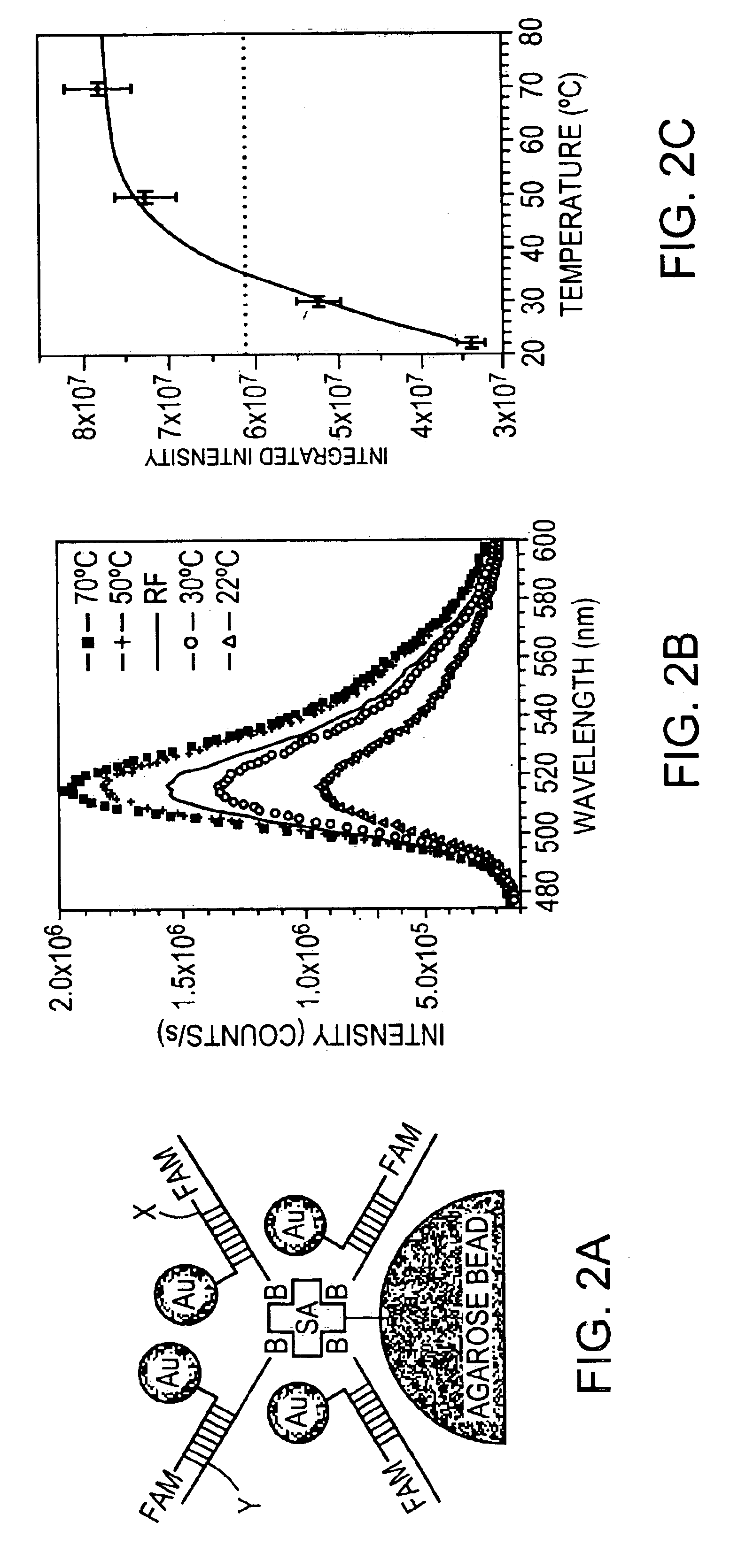Direct, externally imposed control of nucleic acids
a nucleic acid, external control technology, applied in the direction of biomass after-treatment, enzymology, instruments, etc., can solve the problems of inability to precisely control individual molecular entities or portions thereof, affecting the functional properties of all biomolecules in the sample, and affecting the structure of other components of the sample, etc., to reduce the affinity of modified antisense nucleic acids, reduce the inhibitory effect, and inhibit the translation of a specific mrna
- Summary
- Abstract
- Description
- Claims
- Application Information
AI Technical Summary
Benefits of technology
Problems solved by technology
Method used
Image
Examples
example 1
Methods and Compositions for Associating Modulators with Nucleic Acids
[0061]DNA oligonucleotides were purchased from Research Genetics with end modifications of biotin, primary amines, or 6-carboxyfluorescein (FAM). Exposure of fluorescently labeled oligonucleotides to light was minimized to prevent photobleaching. All oligonucleotides were HPLC purified.
a) Labeling an Oligonucleotide with a Gold Nanocrystal.
[0062]All DNA oligonucleotides were synthesized via solid phase chemical synthesis (Research Genetics, Huntsville). Addition of internal amines, terminal biotin, or fluorophores was done during oligo synthesis. Oligo M: DNA loop / hairpin oligos (“molecular beacons”) have a thymine in the loop region which was modified on the 5 position of the base with a C6 primary amine, to which a nanocrystal was covalently linked. Functionalized 1.4 nm gold nanocrystals which have a single sulfo N-hydroxy-succinimide (NHS) ester and are uncharged (Nanoprobes, Yaphank, N.Y.) were incubated with...
example 2
Direct Inductive Heating of an Oligonucleotide Associated with a Gold Nanocrystal in Solution
[0069]Inductive coupling involves the transfer of energy from one circuit to another. If the secondary circuit has a finite impedance, eddy currents are produced which are converted to heat by the Joule effect. This technique of heating a conductor by placing it in an alternating magnetic field is generally used to heat macroscopic samples (centimeter length scales). Here, metallic nanocrystals (diameter≈1.4 nm) are applied in solution. Induction heating is accompanied by a skin deep effect resulting from partial cancellation of the magnetic fields. As a result, the majority of the power absorbed by a conductor is concentrated in a depth d0 given by d0=12πρ·107μrμ0f(1)
where μr=magnetic permeability, μ0=permeability of free space, ρ=material resistivity, and f=frequency of the alternating magnetic field. The power density is described by P=4π He2μ0μrfFd0d (2)
where d=sample diamete...
example 3
Direct Inductive Heating of an Oligonucleotide Associated with a Gold Nanocrystal on a Solid Support
[0071]To determine the effective temperature that inductive coupling to the nanocrystal antenna produces in its local environment, a two-phase system was designed in which an oligo is dehybridized from a solid support into solution (FIG. 2a). Oligo X is a 12mer with a nanocrystal on the 3′ end and a fluorophore (FAM) on the 5′ end. It was hybridized to its complement, oligo Y, which was immobilized on 100 μm streptavidin coated agarose beads that comprise the solid phase. When X was dehybridized from Y, it diffused from the solid phase to the supernatant. The amount of dehybridization was proportional to the amount of X in the supernatant, which was measured by fluorescence spectroscopy. One sample was exposed to the RFMF and its supernatant was removed. Its fluorescence spectrum was compared to supernatants of identically prepared samples that were thermally heated at specific temper...
PUM
| Property | Measurement | Unit |
|---|---|---|
| Structure | aaaaa | aaaaa |
| Responsivity | aaaaa | aaaaa |
| Antisense | aaaaa | aaaaa |
Abstract
Description
Claims
Application Information
 Login to View More
Login to View More - R&D
- Intellectual Property
- Life Sciences
- Materials
- Tech Scout
- Unparalleled Data Quality
- Higher Quality Content
- 60% Fewer Hallucinations
Browse by: Latest US Patents, China's latest patents, Technical Efficacy Thesaurus, Application Domain, Technology Topic, Popular Technical Reports.
© 2025 PatSnap. All rights reserved.Legal|Privacy policy|Modern Slavery Act Transparency Statement|Sitemap|About US| Contact US: help@patsnap.com



